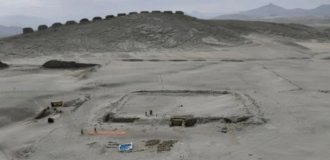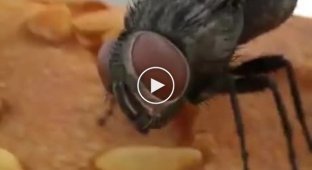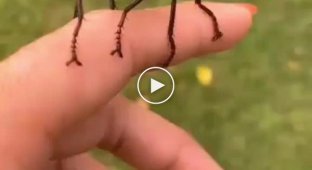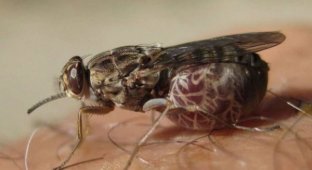Oil fly: the only animal on the planet that lives in crude oil (7 photos)
Sometimes all you need to be happy is a company. Your own oil company! Even flies know this, and the smartest of them have organized an oil refining company. And while all the other animals suffer from black gold spills, these winged businessmen are setting up their own production! 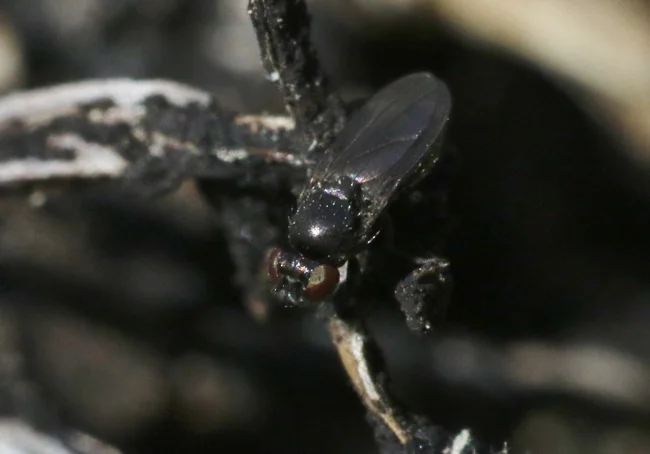
Hey, baby, I have an oil puddle. Want me to show you?
The oil fly is a unique animal in every sense. Firstly, because it lives in only one place in the world - in the area of bitumen lakes in Rancho La Brea in California. Here, crude oil and bitumen spurt out of the ground, forming black swamps. Secondly, in this place, the fly is the only inhabitant. No animal on the planet is able to comfortably live and develop in toxic crude oil, except for this one bug! 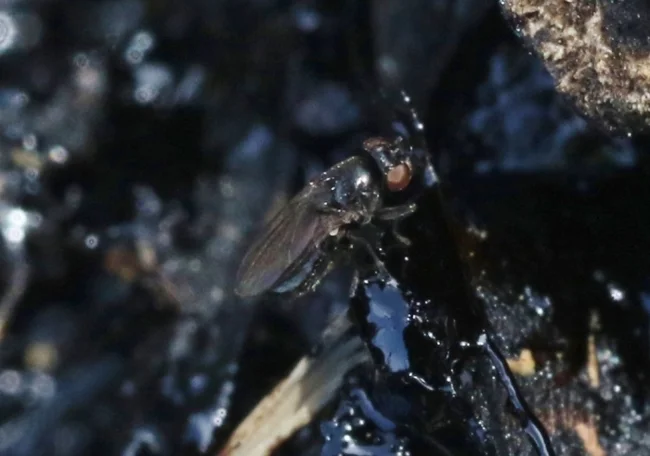
Jam? What kind of kindergarten. I'm an enterprising fly, I need to build an oil business!
The family of shore flies, to which our heroine belongs, loves extreme conditions: thermal springs, geysers and highly salty lakes. However, none of the relatives of the oil fly can live in oil. Moreover, no insect, much less a vertebrate, is capable of this. 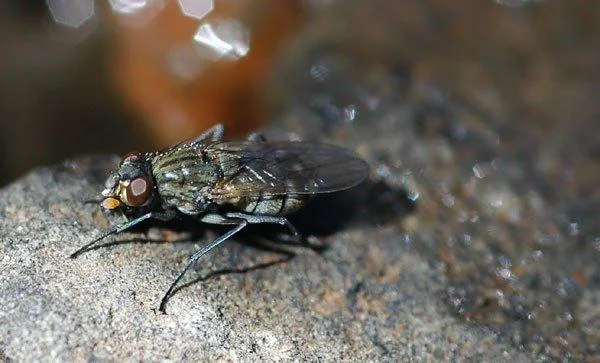
So this is the insect that will actually survive the apocalypse. A fly, not a cockroach!
All animals experience damage of varying severity after contact with the substance: from skin irritation, hair loss and feather gluing to severe poisoning and embryonic deformities. So it turns out that oil is a very toxic thing and poorly compatible with life. But where everyone else sees difficulties, flies have found an opportunity. Get it? No one is walking = a completely free niche to settle! 
The bitumen lakes of Rancho La Brea have become a treasure trove for paleontologists. These lakes have existed for several million years. Many prehistoric animals have fallen into them: mammoths, saber-toothed cats and other giants of the past.
How do flies manage to survive in oil when everyone else dies from it? Adults - no way. They lead unremarkable fly lives. They don't have any superpowers either: if they land on the black oil surface, they'll stick and die right away. But their larvae are a completely different matter! 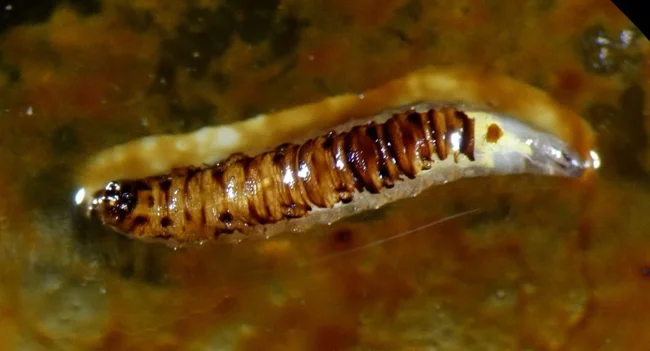
Yes, these sausages know a thing or two about survival.
Oil worms were discovered back in 1899. But to this day, there have been no detailed studies of their skin and it is unknown which compounds provide impenetrable armor from oil toxins. In laboratories, scientists have tried keeping flies in more saturated and toxic variations of oil. But the insects felt practically nothing. They swim, breathe through a spiracle and periodically dive, as if it were a simple body of water, and not a deadly puddle! Even when the oil heats up to 38⁰C, the larvae feel calm. 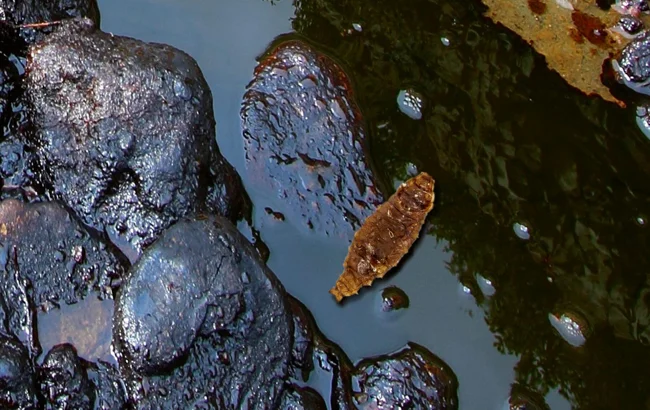
After the larva has eaten its fill, it crawls out onto the shore and molts on nearby plants.
The flies do not feed on the oil itself. They eat insects that fall and drown in the black gold. True, the larvae drinks down the meal with a strong liquid from the lake. To avoid ending up like its prey, a whole laboratory for processing hazardous substances is hidden inside the fly! An army of single-celled organisms lives in the intestines of the larvae — about 200 thousand! 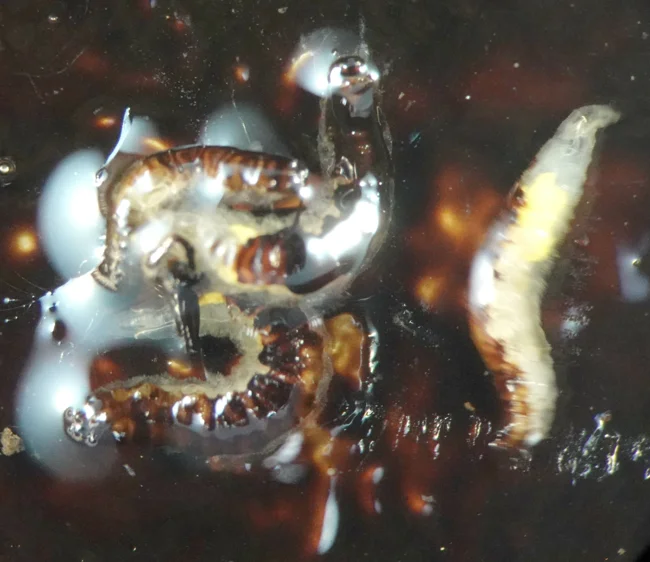
Mmm, toxic soup of oil and worms. Delicious!
The genus of bacteria acinetobacter is especially interesting. Some of its strains are capable of decomposing oil by 40-99.7%! The mechanism of their work has not been precisely studied. However, one bug can become a savior for hundreds of ecosystems from oil spills. All you need to do is hire a fly gastroenterologist and study the insects' gastrointestinal tract in more detail!






